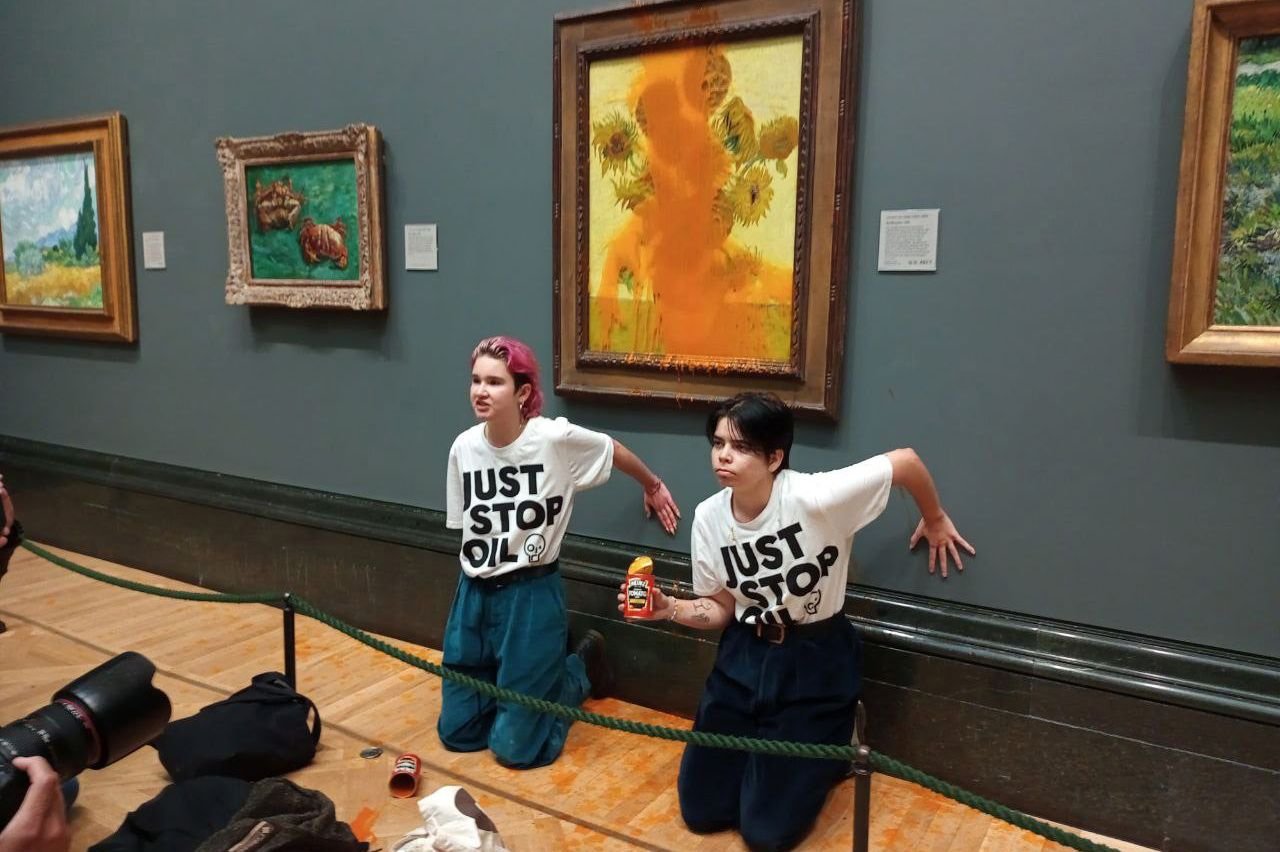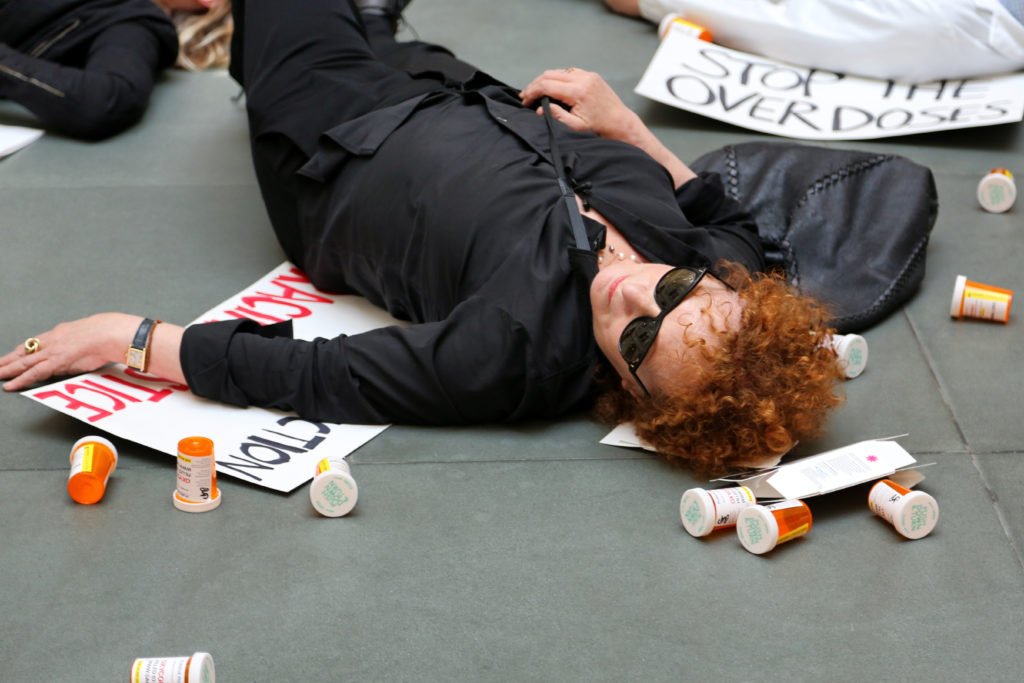How Museums Became Staging Grounds for Protest Movements

Written by Ryan Waddoups and originally published by SURFACE, October 19, 2022.
Last week, chaos erupted at London’s National Gallery as two young protesters suddenly hurled tins of Heinz cream of tomato soup at Vincent Van Gogh’s beloved Sunflowers. As the viscous liquid dripped down the painting’s glazing, the duo—two members of Just Stop Oil, an activist group that aims to stop gas and oil extraction in the U.K.—smeared their hands with glue and stuck themselves to a wall. In an impassioned speech, they questioned if visitors “are more concerned about the protection of a painting, or the protection of our planet and people?” (The painting was protected by glass and overall unharmed.)
Footage of the incident went viral, achieving what the activists (who were both arrested) originally intended. Disruptive protests have become common in Europe and the U.K., with the goal of putting psychological pressure on governments to respond more quickly to environmental calamity and cultural institutions to divest from sponsorships by oil companies like BP and Shell. Protesters have started gluing their hands to the canvases of masterpieces, such as Leonardo da Vinci’s The Last Supper at the Royal Academy and Van Gogh’s Peach Trees in Blossom at Courtauld Gallery in London. There’s a shock factor to seeing tomato soup splash all over an $84 million painting, but damaging art isn’t the point—the main strategy involves garnering publicity, and bizarre antics beyond typical “glue-ins” are a surefire way to make headlines.

Disruptive protests are nothing new. Demonstrators have used museums as props for nonviolent activism for more than a century, an early example being Mary Richardson slashing a Diego Velázquez nude at London’s National Gallery with a hatchet to protest the imprisonment of suffragette pioneer Emmeline Pankhurst. Richardson went on to inspire the Extinction Rebellion, an environmental movement that uses nonviolent civil disobedience to compel government action. Its members don’t limit themselves to museums—they’re known to climb on the roofs of commuter trains or block entire parts of London, such as roads and bridges around Parliament, much to the dismay of former prime minister Boris Johnson. “This is not the X factor,” Alex De Kooning, a Just Stop Oil spokesperson, told The Guardian. “We aren’t trying to make friends here, we’re trying to make change, and unfortunately this is the way change happens.”
Besides shedding light on the climate crisis, activists have also put pressure on museums to stop accepting donations from the Sacklers—the infamous family behind Purdue Pharma, the pharmaceutical company that made the addictive opioid painkiller OxyContin—and part ways with board members who have ties to fossil fuels or weapons. In 2019, Warren Kanders stepped down from his role as vice chairman of the Whitney Museum after the activist group Decolonize This Place protested his ownership of Safariland, a manufacturer of military and law enforcement supplies including gun holsters and tear gas.
The filmmaker Nan Goldin, a former OxyContin addict, has staged multiple die-ins—a form of protest in which participants simulate being dead—at British and American cultural institutions to call on their directors to remove all associations with the Sackler name. Her efforts weren’t for naught—after years of vigorous activism and righteous anger, the Victoria & Albert Museum, the British Museum, Dia Art Foundation, and the Louvre all dropped the Sackler name. Laura Poitras even directed a documentary, the critically acclaimed All the Beauty and the Bloodshed, about Goldin’s career and persistent protests.

Though Goldin’s efforts have yielded tangible change, it remains to be seen what the glue-ins and tomato soup splashing will accomplish besides sparking a media firestorm. Some question if vandalizing fine art is an acceptable conduit for activism: “I’m struggling to understand why destroying a painting of sunflowers done by Van Gogh, an impoverished man who was marginalized in his local community due to his mental illness, is the right target to make a statement about how awful the oil industry is,” one person tweeted. Speaking out against this form of protest, New York magazine art critic Jerry Saltz warned that “less protected works” may suffer permanent damage in the hands of increasingly brazen protesters.
Dana Fisher, a professor of sociology at the University of Maryland who specializes in protest movements, cautions that escalating strategies may alienate those who may otherwise sympathize with the cause. “Research shows that this kind of tactic doesn’t work to change minds and hearts,” she told the Washington Post. “It’s working to get attention, but to what end?” Protests and die-ins appear to be encouraging museums like Tate and to divest from oil money, though amounts are often on the smaller side—0.8 percent of the British Museum’s annual income, for example—and are easily substituted with other funding mechanisms. The takeaway: Money and trustees may be replaceable, but priceless art isn’t.